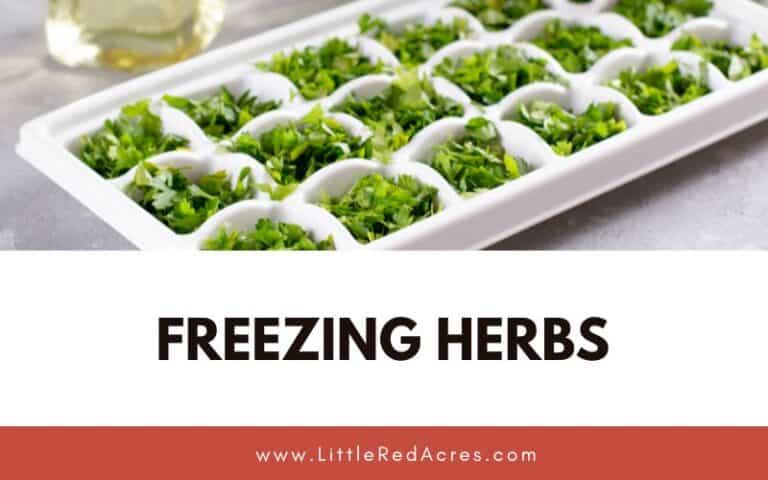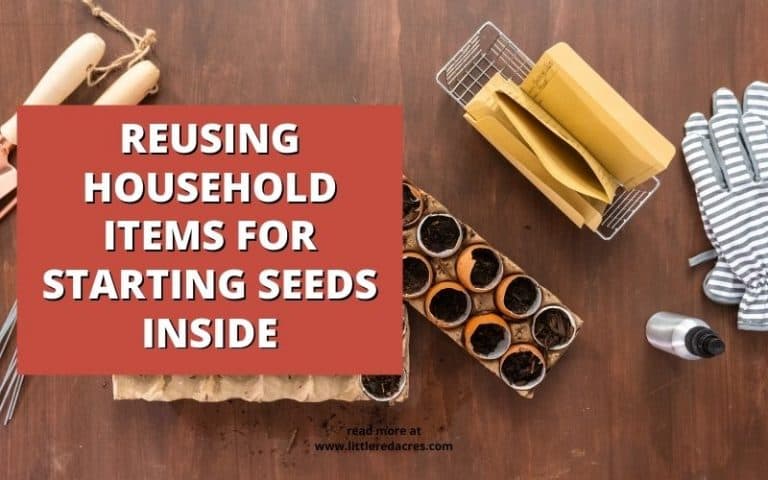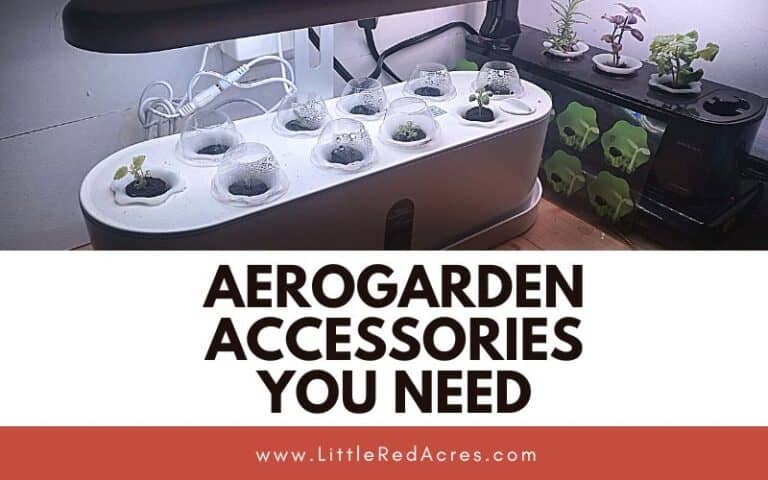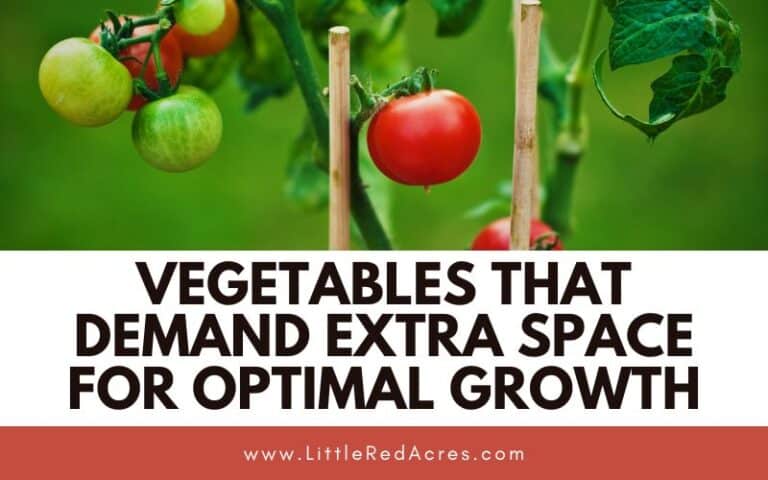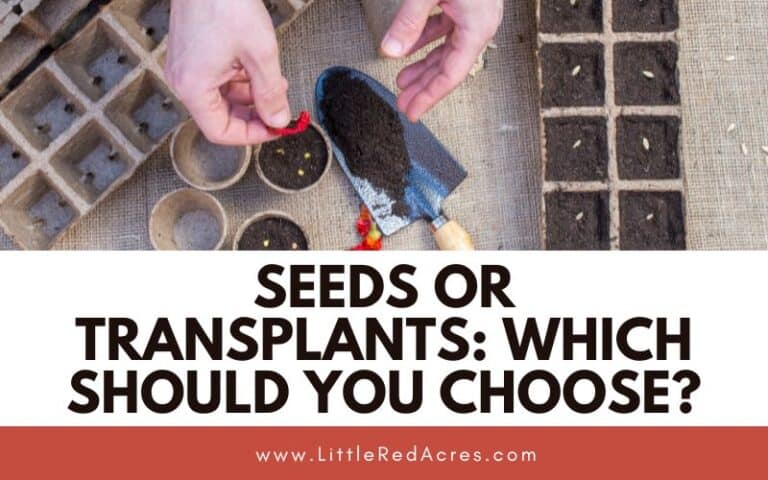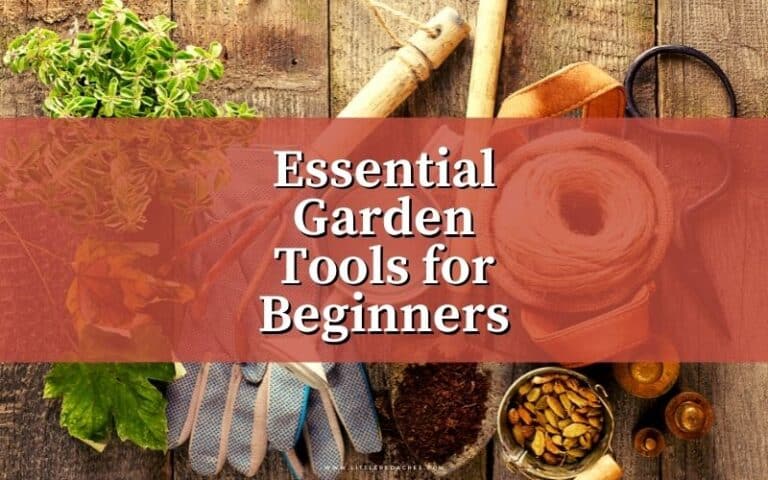When to Start Seeds Indoors for Spring Planting
Inside: Find the perfect time to start seeds indoors for thriving plants! Avoid setbacks and find planting success for thriving gardening!
Are you itching to get your garden planted? It can be tempting to get your seeds started in the house now, but you might need to wait for just a little while longer so you don't end up with dead plants before you can transplant them outside. When to start seeds indoors for spring planting is a big question.
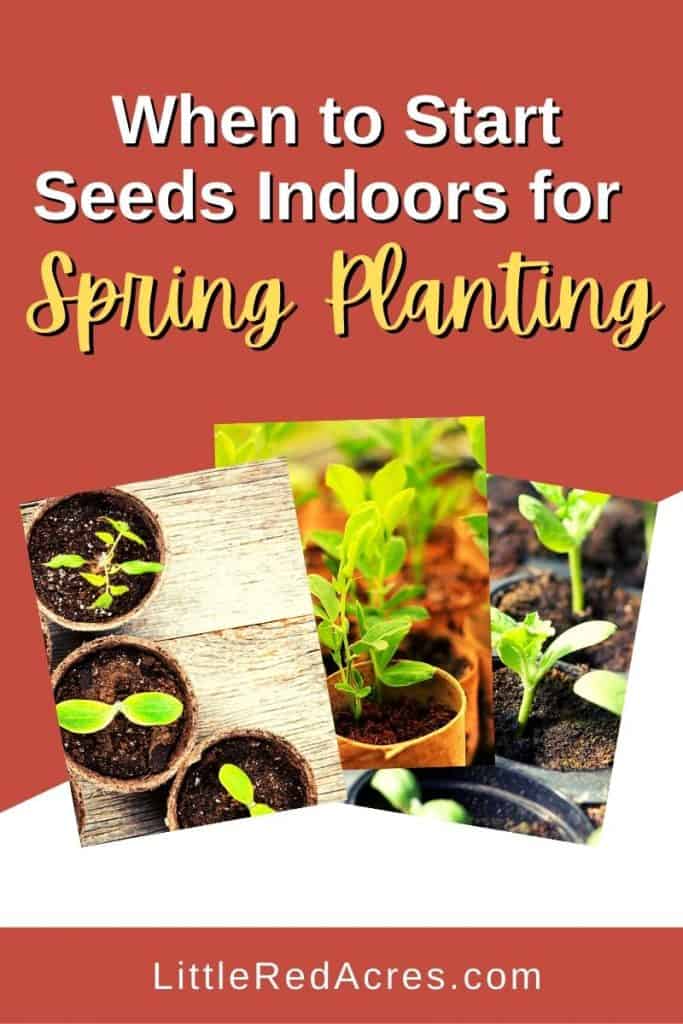
This post may contain affiliate links, see my disclosure policy for more information.
When to Start Seeds Indoors for Spring Planting
There are several benefits to starting seeds indoors over planting them outside, highlighted below. Most avid gardeners start at least some of their seeds inside. I do!
Northern gardeners and those with short growing seasons absolutely must start seeds indoors to successfully grow and harvest certain crops! Starting your seeds inside lengthens your growing season.
Get updates & freebies delivered to your inbox!
Plants That Have A Longer Growing Season
There are some plants that just take a long time to go from seed to harvest. Broccoli, cabbage, and cauliflower for example. Giving these plants a head start in the house gives them growing time for you to be able to harvest them before the end of summer/autumn.
Tomatoes, peppers, and eggplant can take a couple of months before they begin producing edible fruits. Starting them indoors means you’ll be harvesting sooner and longer before chilly fall weather returns once again.
You just want to avoid planting too soon.
Cucumbers do not like to be moved once they have passed the sprout stage for example and it would be a shame to have your plants die after all your hard work. Once those first set of leaves have opened, I recommend getting them into the ground or pot where you want them to be.
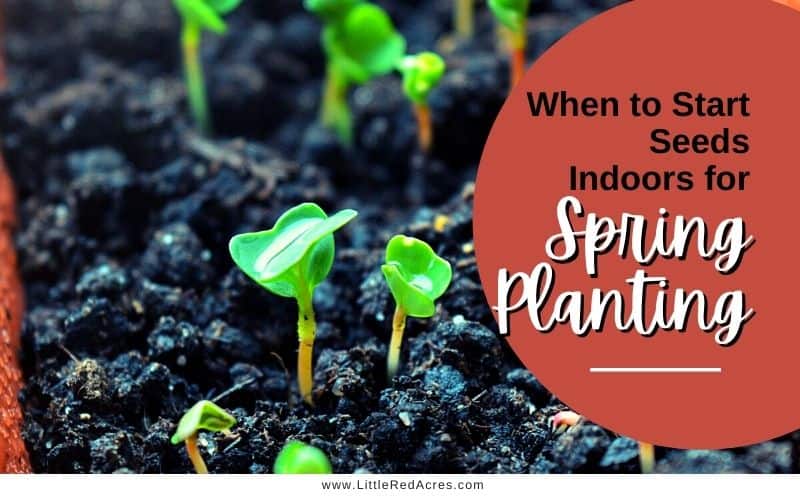
Plants to Start Indoor
- broccoli
- brussels sprouts
- cabbage
- lettuce
- tomatoes
- cauliflower
- celery
- eggplant
- peppers
The following vegetables can be started indoors, but must be carefully transplanted:
- celery
- chard
- cucumber
- melon
- peas
- pumpkin
- spinach
- squash
Seed Planting Planning Tools
Use this calculator to determine when you should be starting your seeds. Below is an example from the calculator for when I should be starting seeds based on the last frost date of May 23.
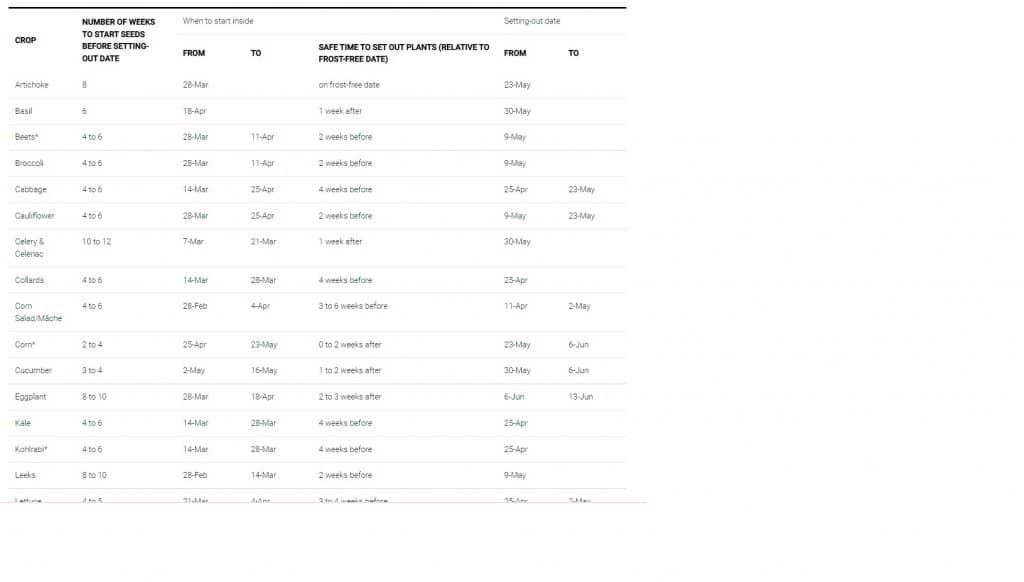
How To Start Seeds Indoors
Let's get those seeds started. Grab your supplies, and pick somewhere that is easy to clean up because you are going to make a mess. I try so hard to contain my mess but it never works, I get dirt everywhere.
Seed Starting Supplies
- Seedling tray with cells, drip tray, and cover
- Seed-starting soil mix or seed starting pellets
- Grow lights
- Spray bottle “mister” and watering can with rain nozzle
- Plant labels
- Seeds
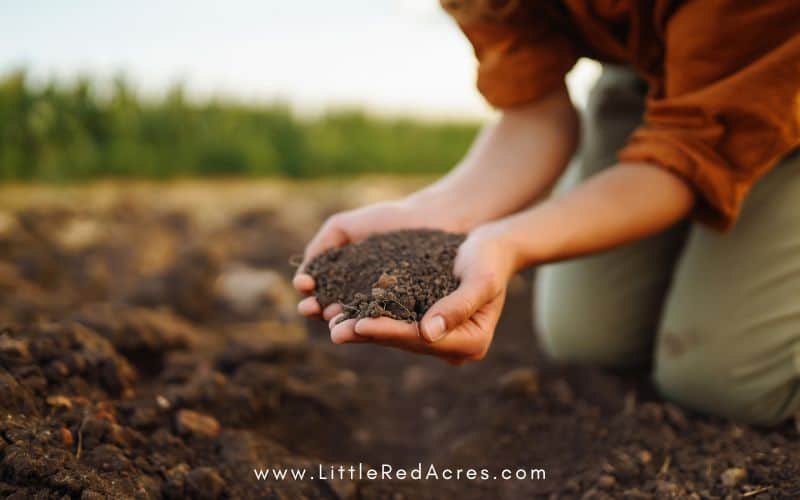
Seed Starting Containers
You can start seeds in almost any small container as long as it allows drainage but the easiest and most efficient choice is a seedling tray with cells. When it’s time to transplant, it’s easy to slide the plant and soil out of the cell and into the garden or a larger pot. These plastic trays can be reused for several years. Just remember to clean them well before reusing them.
Reusing plastic pots can be an excellent way to save money, reduce waste, and help the environment. As the demand for plants increases, more and more people are looking for ways to grow their plants without spending a fortune on plastic pots and containers.
You will also need a drip tray to catch draining water and a clear cover, which is essential for keeping in moisture and heat while your seeds germinate.
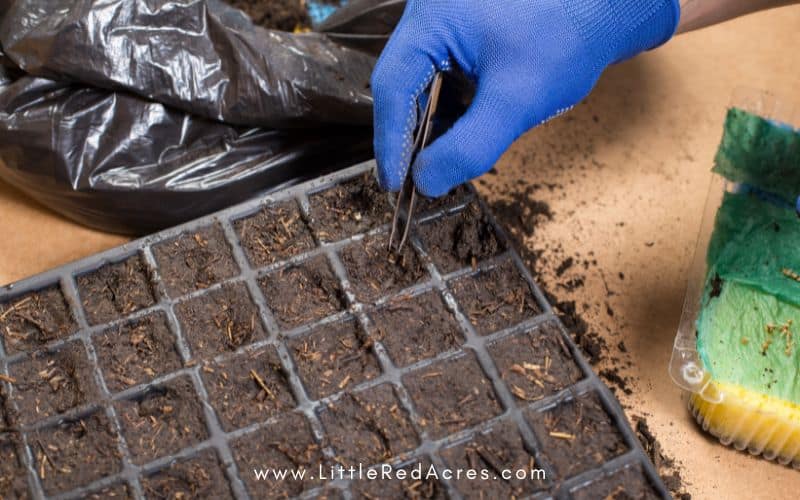
Soil
Before sowing, place the soil in a large bowl, sprinkle it with water, and mix to moisten it evenly. You don't want mud!
You can also use soil seed starting pellets. These are so easy to use. You add warm water to the tray, they expand so planting. I use these more often than not because it is just so easy! HOWEVER. When I plant, I remember the “biodegradable” mesh from around the pellets and plants for a couple of reasons:
- hampers roots initially
- doesn't break down fast enough for me – I found some a year later
Lighting Matters
You need to add light. Grow lights aren't expensive either. I have a few sets that I have found on Amazon through their Warehouse Deals for under $20.
You want the light directly over your seeds, and then your plants so to avoid leggy plants, tomato plants are prone to this.
Leggy plants are when your plants have a long, thin stem with just a few leaves at the top. This makes them prone to snapping and weaker overall.
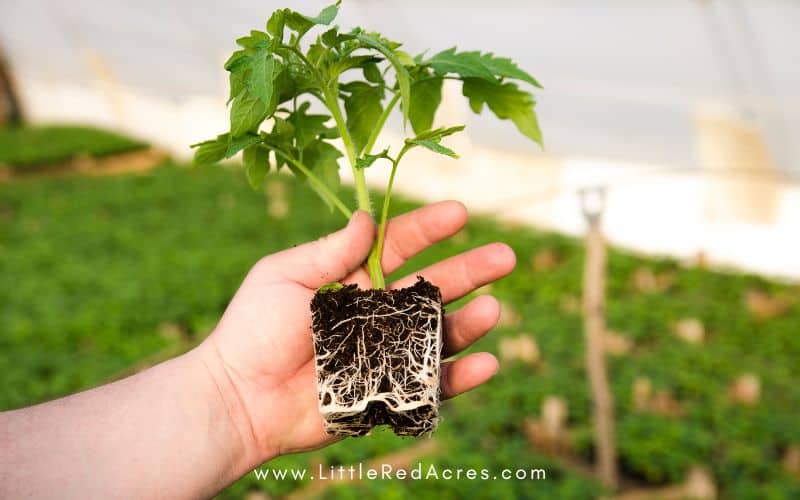
Watering
While my seeds are in the house, I tend to use a spray bottle to mist them. I don't risk over-watering or making a mess in my house.
Make sure to label your seeds! You don't want to be guessing later on about what seeds are what.
So, there you have it – everything you need to know about starting seeds indoors for your spring planting. Whether you're a seasoned gardener or just beginning, starting seeds indoors can be a fun and rewarding experience.
With the right materials and knowledge of what seeds do best inside, you can get a head start on your garden and enjoy a plentiful harvest this year. So, grab your seeds, and soil, and get ready to watch your indoor garden grow!
Frequently Asked Questions
What month is best to start seeds indoors? Mid-March is the best time to start many vegetables and annual flowers indoors for transplanting outside once the threat of frost has passed.
How long does it take for seeds to sprout indoors? Some are quick to germinate, taking 1-2 weeks at most, such as chillies, beans, sunflowers, and pumpkins. Some seeds take more like 2-4 weeks, such as mango and parsley. Read your seed packages!

Want More?
Transitioning Seedlings Outdoors: A Gardener’s Guide
Tips for Growing Plants from Seeds
The Ultimate Guide to Planting Seedlings: Depth Matters

